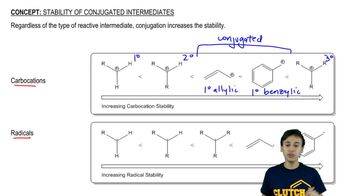Predict the product of the following addition reactions to dienes.
(a)
 Verified step by step guidance
Verified step by step guidance Verified video answer for a similar problem:
Verified video answer for a similar problem:



 12:6m
12:6mMaster Conjugated Hydrohalogenation - General Mechanism with a bite sized video explanation from Johnny
Start learning